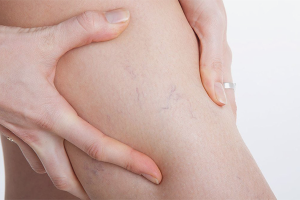The content of the article
Gynecomastia is a disease in which the male breast increases in size. This condition causes not only discomfort, but also a serious health problem, as it is associated with a hormonal imbalance. Unfortunately, this pathology is observed quite often, and many men do not know how to get rid of it. Only a doctor can help in this matter.
Reasons for the development of gynecomastia
The etiology of the disease is associated with a lack in the male body of the hormone testosterone and an excess of estrogen. In some cases, this hormonal disruption is due to the intake of natural estrogens in foods, such as beer.
In addition, the following pathologies can lead to the development of the disease:
- hyperprolactinemia;
- taking steroids;
- cirrhosis of the liver;
- kidney and adrenal disease;
- endocrine disorders;
- cancer of the testicles, stomach, lungs, pancreas;
- pituitary tumors;
- HIV
- tuberculosis;
- cardiovascular diseases;
- hypogonadism.
The most common type of gynecomastia is a false one, which occurs in obese men.
There is also physiological gynecomastia, which is observed:
- In infants, when the hormones of the mother are transmitted through the placenta, the signs of the disease persist until one month of age and pass without any consequences;
- In adolescent boys, in cases where there is a temporary hormonal imbalance, it disappears within two years;
- In old age, when a man has a decrease in the hormone testosterone and a significant increase in weight.
Gynecomastia often develops against a background of hereditary predisposition. In some cases, the cause of gynecomastia is difficult to establish: this type of disease is called idiopathic.
Symptoms of the disease
The disease can manifest itself with very unpleasant symptoms:
- impotence;
- violation of libido;
- fatigue and weakness.
In babies, there is swelling in the chest area, in rare cases, colostrum appears.
In adult men, an increase in mammary glands is observed up to 10 cm in diameter and up to 150 g in weight. You can also detect swelling of the nipple and darkening of the halo around it - this phenomenon is characteristic of women during lactation. Often manifests soreness of the nipples, discomfort and tension, but more often the enlargement of the mammary glands in men is not associated with any sensations.
The disease has the following stages:
- Proliferating (developing): in this case, a drug treatment will be enough.
- Intermediate, during which the glandular tissue ripens. This stage can last up to a year.
- Fibrous - during this period, connective and adipose tissue develops and grows. To stop this pathology with the help of drug therapy is becoming almost impossible.
Diagnosis of gynecomastia
To conduct a full examination and identify the causes of the disease, you should contact a surgeon, mammologist, endocrinologist and andrologist.
The specialist will appoint:
- laboratory blood tests for hormones;
- Ultrasound of the mammary glands;
- tomography of the adrenal gland or thyroid gland.
- mammography;
- biopsy.
Gynecomastia Treatment
Physiological and age-related gynecomastia are not treated. Hormonal disorders associated with this type of disease go away after stabilization. If boys have high concentrations of estrogen, hormone therapy is given:
- Tamoxifen;
- Dehydrotestosterone;
- Clomiphene;
- Danazol;
- Testolactone.
Conservative drug therapy of gynecomastia is very effective in the initial stages of the disease and in adults. Such treatment is appropriate in the first 4 months from the onset of initial symptoms.
If estrogen is found in excess, antiestrogen therapy is carried out with Tamoxifen, which blocks female hormones and prevents the mammary glands from developing.
Treatment of gynecomastia, which arose on the background of taking hormonal drugs (steroids), is not required, the disease goes away immediately after stopping their use.
False gynecomastia is treated with weight correction, in rare cases, liposuction is required.
When conservative methods are ineffective, surgical treatment of gynecomastia is performed to remove glandular tissue in the chest and restore its normal contour.
Surgical methods
When the disease goes into the third stage of drug therapy, it will not be possible to cure it, the help of surgeons will be required. There are several surgical procedures for removing breast tissue. The method is chosen by the attending physician together with the patient.
Surgery is performed to treat true and false gynecomastia. The following types of operations are carried out:
- Conventional mastectomy: complete removal of the mammary gland along with the paralosal halo. Currently, such operations are carried out only for cancer.
- Subcutaneous mastectomy is performed using a paraareolar incision, while the nipple and paranasal region is not damaged.
- Mastectomy with liposuction. Breast removal is performed using a paraareolar incision, then the removal of adipose tissue is performed in order to restore the normal shape of the breast.
- Endoscopy Such a mastectomy can be performed in cases where the increase in the mammary glands is insignificant.
The consequences of the operation
After any surgical treatment, a recovery period will be required, sometimes the doctor prescribes painkillers.
Bruises and swelling may remain in the chest area for some time. To alleviate this condition, you will need to wear special compressive underwear for a month.
For some time, you will have to abandon sexual activity and physical activity.
How to get rid of gynecomastia without surgery
In order to recover from this disease without resorting to surgery, you need to get rid of bad habits and eat right.
If breast augmentation is due to being overweight, special exercise will help.
To regulate the normal level of testosterone in the male body, zinc-rich foods should be included in the daily diet. These products include:
- seeds of watermelon;
- mutton;
- beef;
- oysters
- peanut;
- sesame;
- beef liver.
At the same time, products containing natural estrogens should be excluded:
- legumes;
- flax seed;
- Cheeses
- milk products;
- spinach;
- dates;
- apricots.
Gynecomastia disease is very serious and requires careful diagnosis, first of all, it is necessary to exclude the presence of oncology. The main thing is not to fall into despair and clearly understand that this disease is being treated. However, you must remember that before treating gynecomastia, you should be healed of diseases, the symptom of which is an increase in the mammary glands.














Submit